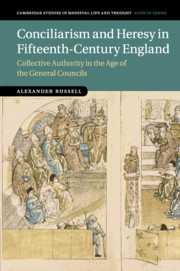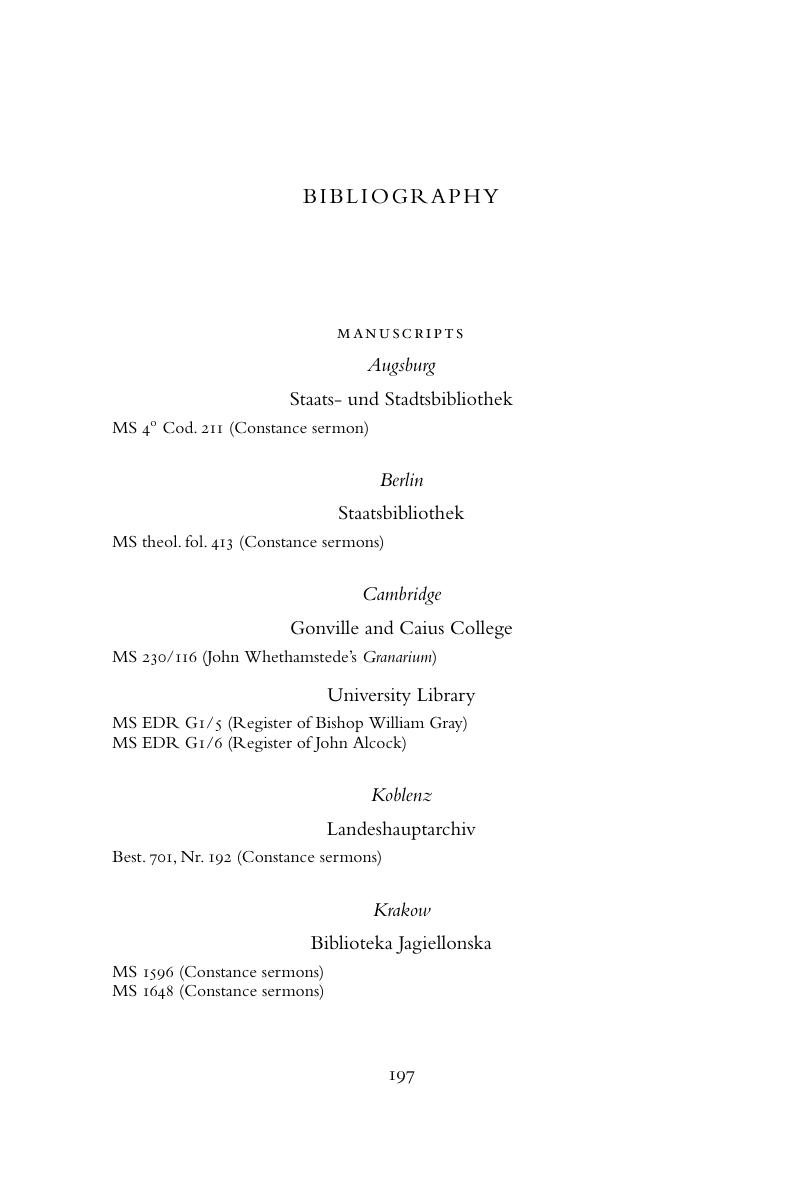 Conciliarism and Heresy in Fifteenth-Century England
Conciliarism and Heresy in Fifteenth-Century England Book contents
- Conciliarism and Heresy in Fifteenth-Century England
- Cambridge Studies in Medieval Life and Thought
- Conciliarism and Heresy in Fifteenth-Century England
- Copyright page
- Contents
- Acknowledgements
- Abbreviations
- Introduction
- Chapter 1 Diplomacy and Reform at the General Councils
- Chapter 2 The Councils and Lay Religion
- Chapter 3 Decision-Making at the Councils and the World of Collective Politics
- Chapter 4 Conciliarism and Heresy in England
- Chapter 5 Representation and Interpretative Authority
- Conclusion
- Bibliography
- Index
- References
Bibliography
Published online by Cambridge University Press: 13 July 2017
- Conciliarism and Heresy in Fifteenth-Century England
- Cambridge Studies in Medieval Life and Thought
- Conciliarism and Heresy in Fifteenth-Century England
- Copyright page
- Contents
- Acknowledgements
- Abbreviations
- Introduction
- Chapter 1 Diplomacy and Reform at the General Councils
- Chapter 2 The Councils and Lay Religion
- Chapter 3 Decision-Making at the Councils and the World of Collective Politics
- Chapter 4 Conciliarism and Heresy in England
- Chapter 5 Representation and Interpretative Authority
- Conclusion
- Bibliography
- Index
- References
Summary

- Type
- Chapter
- Information
- Conciliarism and Heresy in Fifteenth-Century EnglandCollective Authority in the Age of the General Councils, pp. 197 - 217Publisher: Cambridge University PressPrint publication year: 2017


